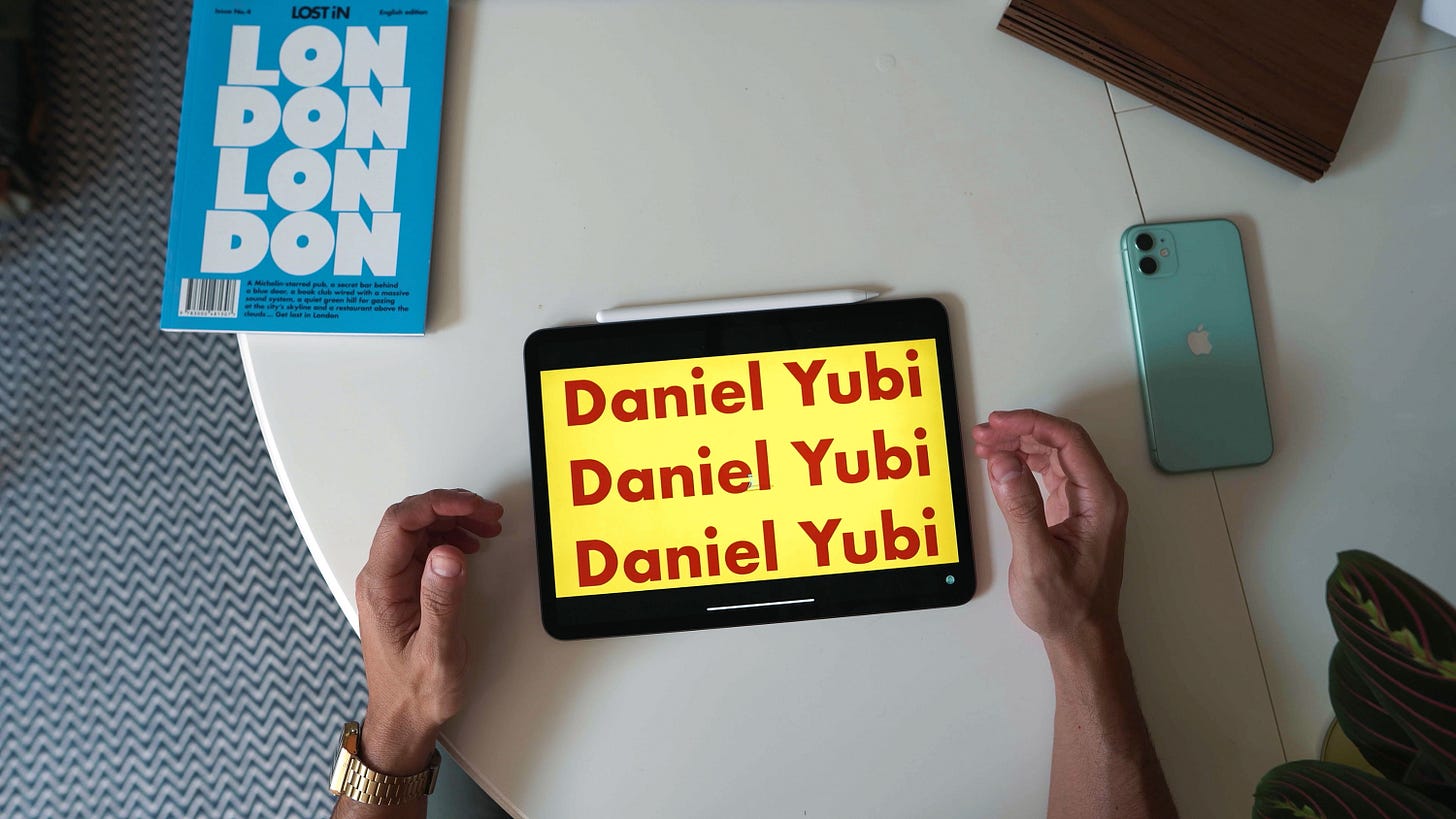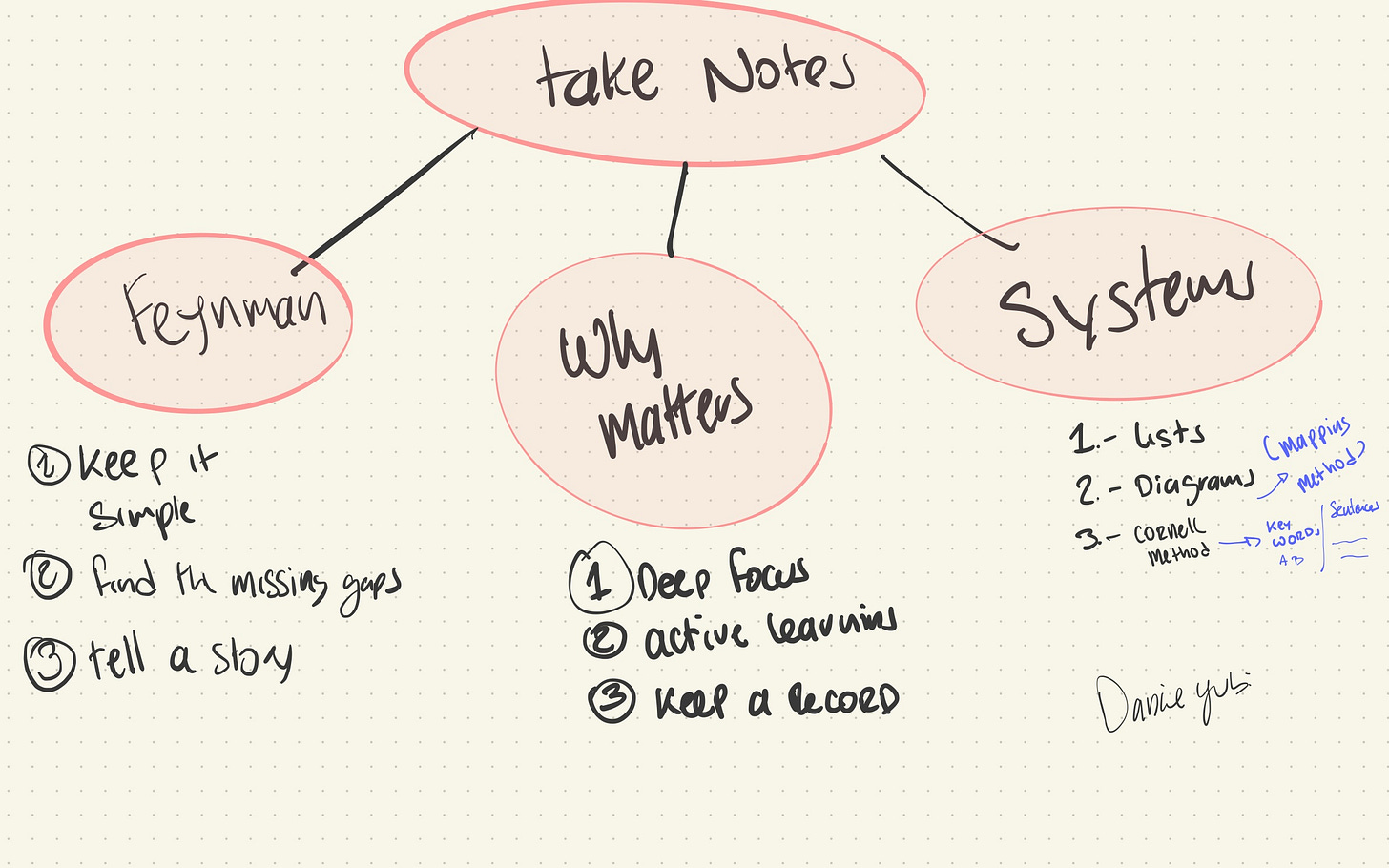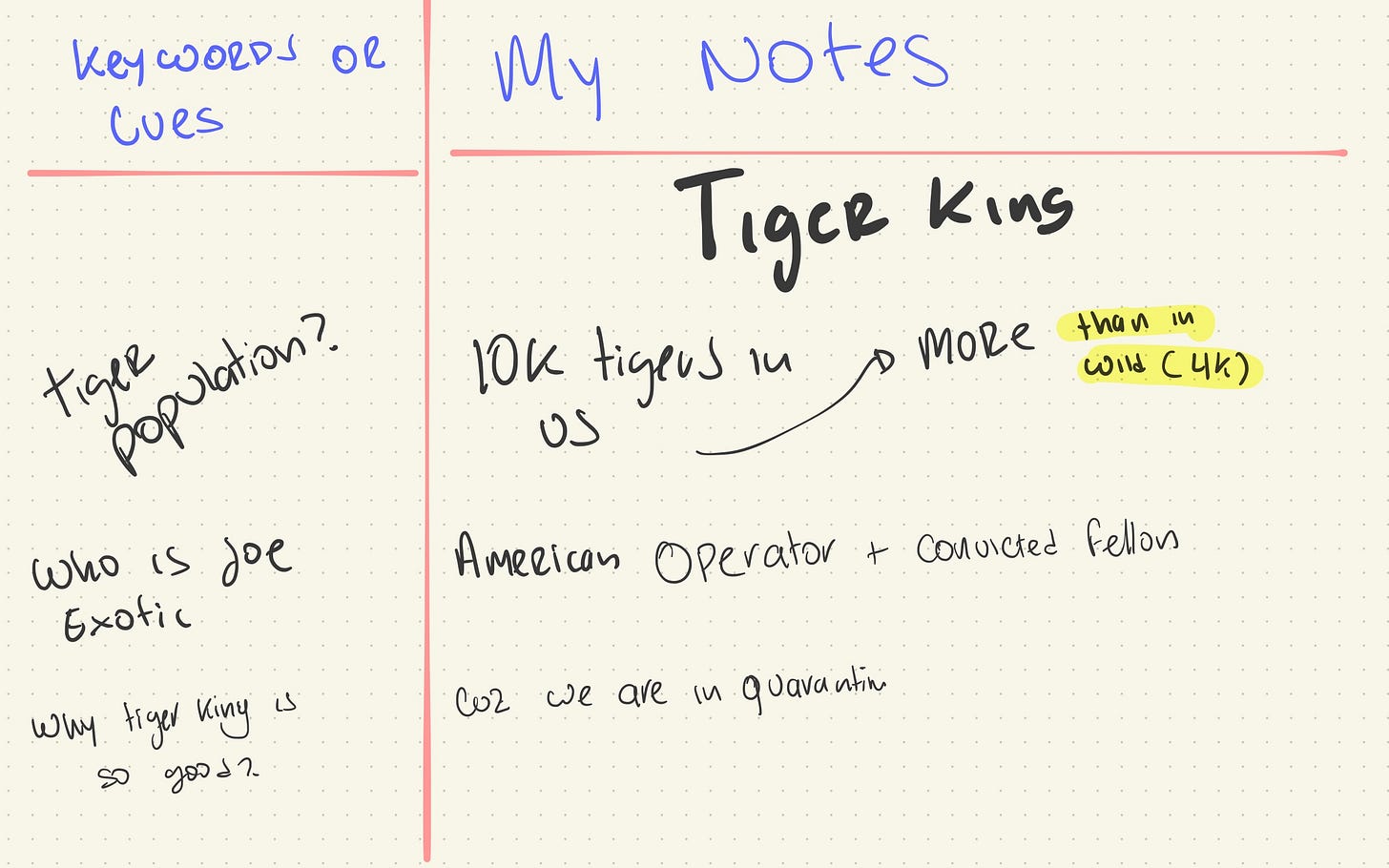
Hi 👋¿Cómo estás? Welcome to issue #6! Today we are talking about how to take notes, and why this matters. As I didn’t find interesting articles to share, I decided to share with you my research around taking notes.
Why it’s important to take notes:
When reading, or listening, taking notes helps you concentrate:
You must actively choose what to write down;
You observe the missing gaps between what you read, and what you wrote.
Keeps a permanent record of what you read and listened to.
Good notes should be clear and concise. They should follow a system. It doesn’t matter how the system works, as long it is consistent for you.
Feynman and how to take notes?
Do you remember the book I mentioned in pasts issues from a brilliant physicist? Richard Feynman has a method to learn and take notes, called the Feynman Technique.
Identify the subject:
Write down everything you know about the topic;
add the note, any new sources of information
Teach it to a child:
Write it down as if you were teaching the subject to a child.
IN PLAIN TERMS.
KEEP IT SHORT
Identify your knowledge gaps:
What are you missing?
What don’t you know?
What’d you like to know more about?
Organize the ideas to tell a story.
Bring all the pieces together.
Note-Taking Systems
1. Lists: Summarised one point after another.
This is the parent-child-grandson way. You have a high-level idea that has a hierarchy over the other ideas. Use points, letters, and indentation to organize the information in order of importance, for example:
I, II, III, IV, V, VI, VII, VIII, IX, X,
A, B, C, D, E, F, G, H, I,
1, 2, 3, 4, 5, 6, 7,8,9,10,
(i), (ii), (iii), (iv), (v), (vi), (vii), (viii), (ix), (x),
a, b, c, d, e, f, g, h, i.
2. Diagrams: Connect ideas.

This is method is great to visually track ideas. You connect and relate one fact to the next one. This method requires concentration depending on the level of detail you want your flowchart to be.
3. Cornell Method: Two Columns

This method was invented by a Cornell professor (obviously). It requires some preparation. The idea behind it, you must split your page into two or three sections:
Left Column: Keywords, cues, questions or comments;
Right Column: Your notes, in relation to the cues or questions; and
Bottom of the page: A summary of what you’ve learned.
If you want to know more about this method check out this link.
What method am I using?

Well, I’m more of a diagram, flowchart person. I’m also trying to create a system in Notion. I will share more about my system soon!
📹 My new video
💃 The song of the week.
Thanks for reading and have a great Sunday!
Follow me on Twitter, and Instagram.
Curated in London by Daniel Yubi
